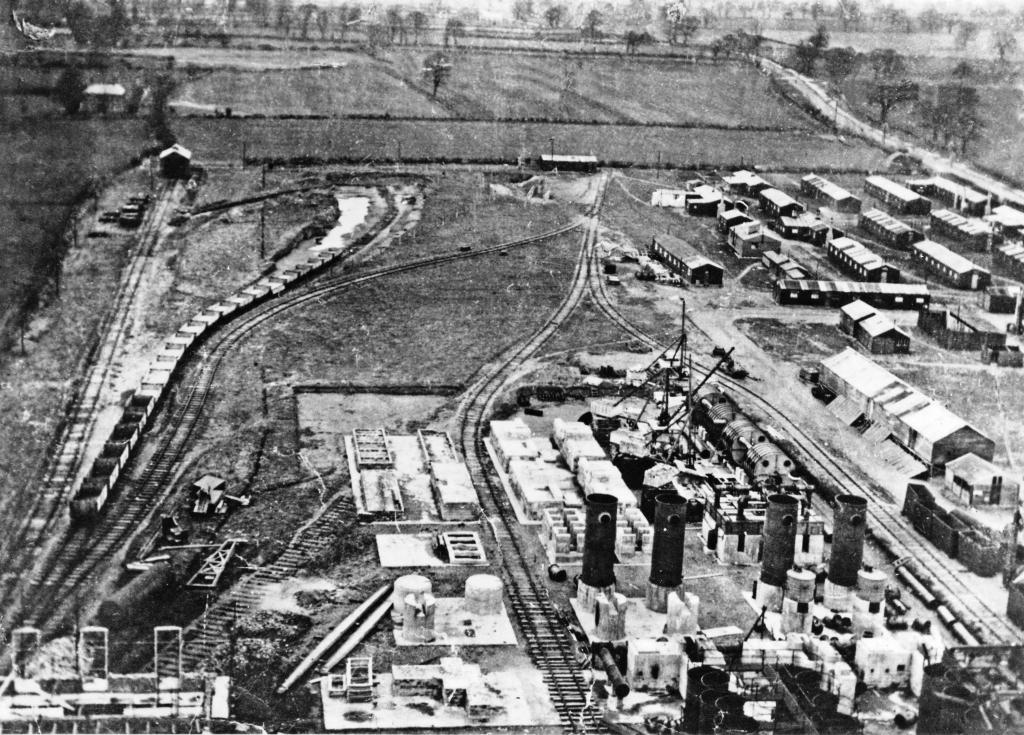
The earliest records of oil-shale in the Kimmeridge Clay in Norfolk were those of William Smith on his geological map of the County (1819) and that of local geologist Rose (1835) who recorded shales that burned like cannel coal. English Oilfields Ltd was formed in 1918 by a Scottish medical doctor, William Forbes-Leslie, to exploit these occurences. The promise of high yields of "practically sulphur-free oil" encouraged shareholders to finance an ambitiously large bank of retorts, a railway link to the London-King's Lynn main railway line and the company's own rolling stock. Neither the proposed mine (the shallow excavation top left) nor the retorts were completed and the works were abandoned in 1923
Notwithstanding the claims that some of the richest oil-shale seams in the world had been discovered together with other resources to produce cheap Portland cement, high quality bricks, electricity and metalliferous minerals, this shallow pit was the only attempt to produce feedstock for the full-size retorts that were said to have the capacity to retort 1000 tonnes of shale per day. At its maximum size, the excavation contained a total of less than 1m of of oil-shale in thin seams with low yields. The gent with the white scarf is probably Dr Forbes-Leslie.
Following the failure of the English Oilfields operations in Norfolk, Dr Forbes-Leslie set up the Shaline Company in 1924 to exploit oil-shales in the Lias that are exposed in extensive cliff and foreshore outcrops on the north Somerset coast between Watchet and Hinkley Point. As in the Kimmeridge Clay in Norfolk, the oil-shales occur as thin (mostly <0.2m thick beds) separated by thick beds of mudstone with low organic contents. The oil-shales are rich in pyrite that gives rise to oils with an unacceptably high sulphur content. The company was short lived and there is no evidence that any oil was produced commercially.

C RWG
O
